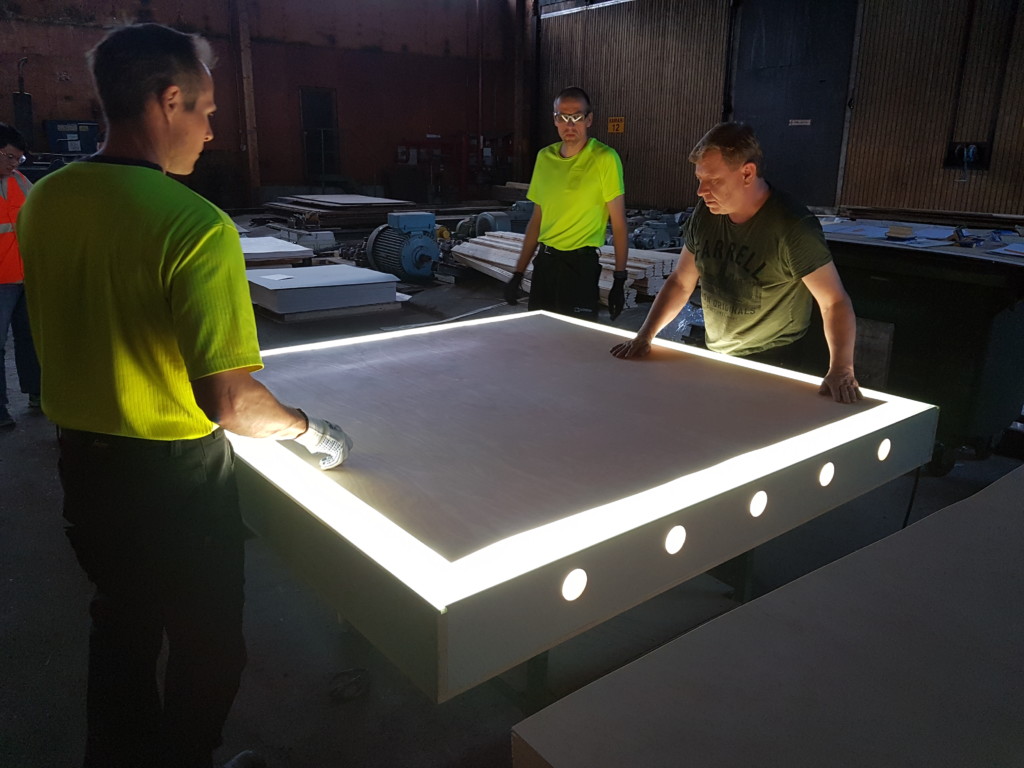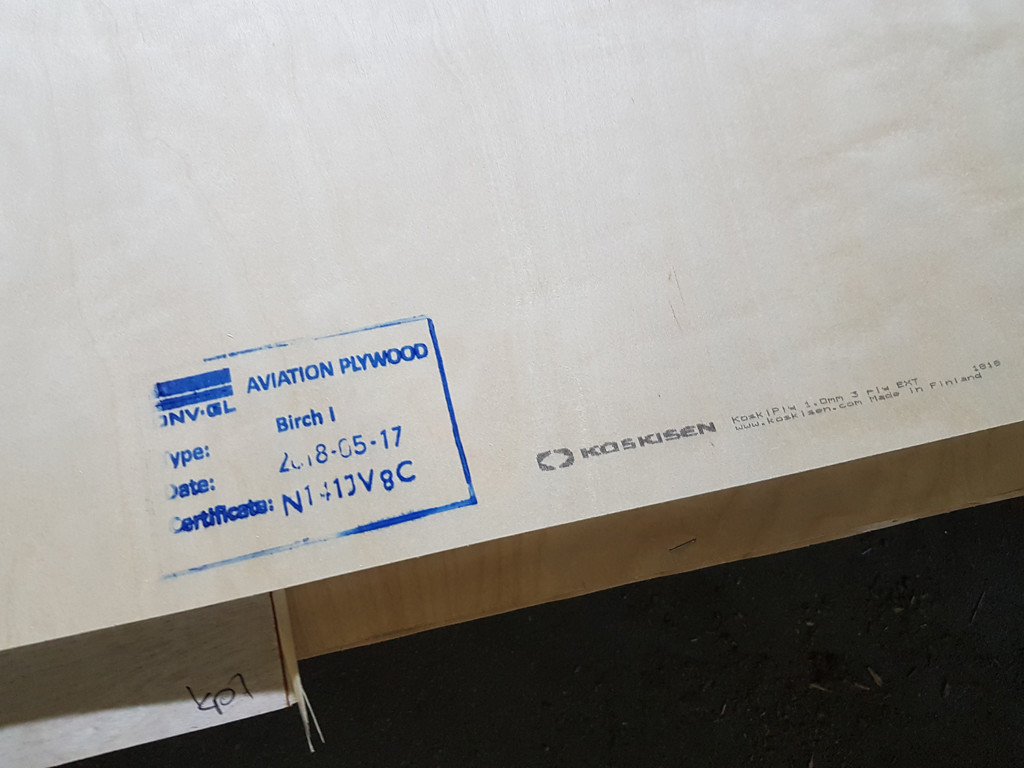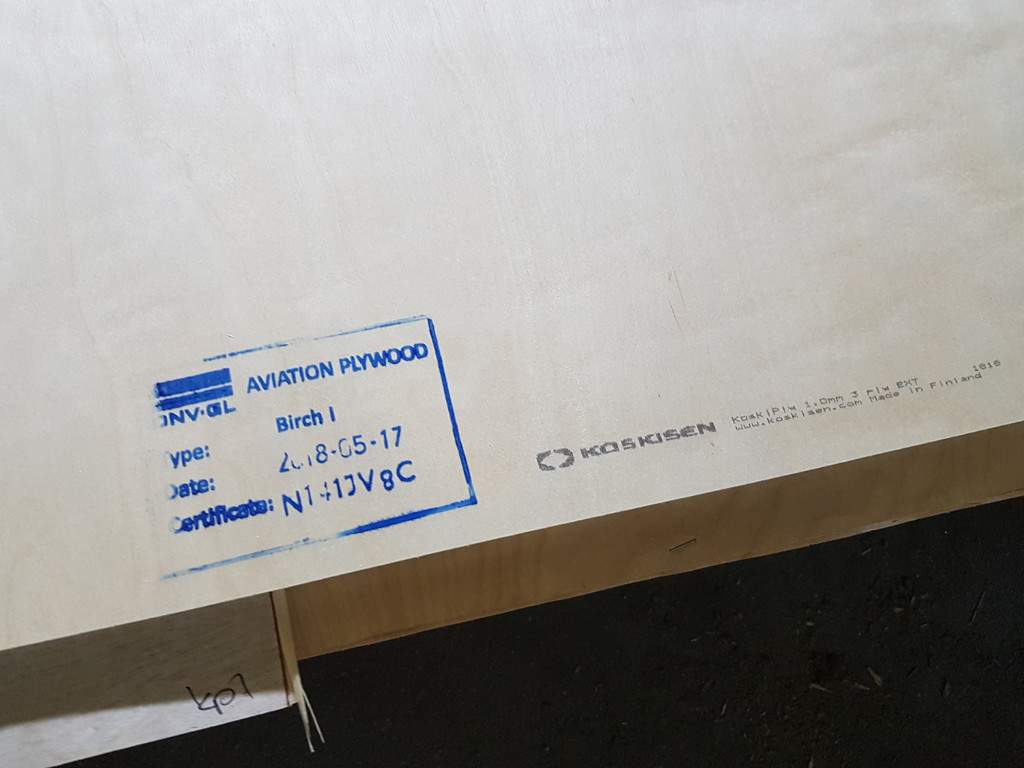What do earrings and airplanes have in common? You can use Koskisen’s thin veneer plywood for both! The difference between the thin veneer plywood panels produced for these two applications is a certificate granted only for plywood that is suitable for use in airplanes.
Thin veneer plywood is a very strong and highly durable material in relation to its thickness and weight, and it is easy to work with. It has been used in the airplane industry for decades particularly due to its light weight, durability and other advantageous technical properties, and it is used to repair airplanes, in light-sport aircraft and airplane replicas. Thin veneer plywood can be found in airplane structures, fuselage and wings.
Plywood is also used in specialised applications: the thickest panels are used as engine beds in the fuselage of propeller planes. In order to guarantee safety and quality, only thin veneer plywood that has been inspected and classified fit for its purpose by a third party, i.e. certified, may be used in airplanes. Insurance companies or national aviation authorities may require a certificate stating that the inspected product is as safe as possible.
The certificate is granted by DNV GL, a company focussing on quality control and risk management services. DNV GL, born in 2013 through the merger of Det Norske Veritas and Germanischer Lloyd, grants certificates and performs audits in a number of industries. Oddly enough, audits of plywood meant for airplanes are linked to marine audits. At Koskisen, the Aircraft Plywood certificate is informally referred to by the company’s name: the DNV GL certificate.
One stamp away from an airplane
DNV GL’s principal surveyor, Jyrki Viherto, arrives at the familiar Hirvensalmi thin veneer plywood mill early on a May morning ready for a sizeable task: hundreds of thin veneer plywood samples await inspection and certification.
The tensile strength tests for the plywood batch had been performed the day before at Järvelä’s authorised laboratory: the panels are tested both dry and wet. If the test samples were to fail the strength test, the entire batch would have to be produced again from scratch. This has never happened, though – and this time is no exception.
Now all the plywood panels will be controlled one by one in order to fully guarantee their high quality. Under Viherto’s supervision, approved panels are stamped with a marking indicating the panel’s quality rating, batch number and the DNV GL representative’s audit details. Each customer’s order has its own batch number, even though the panels are inspected at the same time .
Thin veneer plywood panels receiving DNV GL certification are stamped with two markings: the first includes the manufacturer’s, i.e. Koskisen’s, information, while the other stamp shows that the panel is DNV GL-certified. The customer also receives a certification document, which together with the stamps shows that the product is certified.
According to Koskisen’s Business Manager, Heikki Kiesilä, the company has been producing thin veneer plywood certified by DNV GL since the early 2000s.
“The first-ever GL batch was massive and took several days to inspect. You can check about 300 panels per day, and it took us three or four days to inspect those panels. But that was the only challenge. Production of the panels has gone smoothly since day one,” Kiesilä says.
Choosing veneers for DNV GL-certified panels is a painstaking process
Antti Marttinen , who works on the thin veneer plywood production line, says that although manufacturing the panels requires great care, it is easy when you know what you are doing and when you do everything the way it should be done. Everything starts with the raw material, birch, which contributes to the process with its beautiful appearance and perfect properties, developed throughout its life.
“If there are no problems with peeling, and the wood is perfect and flawless, we will be alright,” says Marttinen, who has been making thin veneer plywood for 12 years.
After peeling, the right veneers must be selected. Veneers for certified plywood are sorted manually. The keen eye of a professional can spot the most beautiful and flawless veneers from the lot. But patience is required.
“It takes time, because for DNV GL-certified plywood, you can’t just take any veneer sheets off the shelf,” says Marttinen.
Two grades of DNV GL plywood
Koskisen’s Specialist, R&D and Sales, Timo Eskelinen, emphasises that thin veneer plywood panels must border on perfection.
“Certain technical specifications, strength properties and gluing values must be within the reference values. The product must also meet the visual requirements,” Eskelinen says.
Large knots, discoloration and scratches are unacceptable for certified panels. The DNV GL certificate classifies thin veneer plywood into two grades, and the smallest of flaws may downgrade a panel to DNV GL II. Koskisen will never even offer panels that would fail the inspection; the goal is always to produce grade one quality when required. Koskisen and DNV GL, however, have a shared view of the quality of the panels.
“It might happen that a customer wants to buy DNV GL II plywood, so we will manufacture it separately. But we follow such high standards that second grade products do not get mixed in the batches unintentionally. It is in the customer’s best interest that they get exactly what they order,” Kiesilä emphasises.
Kiesilä finds it odd that there are still some wholesalers, distributors and operators who sell third- and fourth-grade certified plywood. DNV GL’s Jyrki Viherto also considers it peculiar, since they only classify plywood panels into two grades.
“It is either grade one or two or then none. Plywood falling below grade two is rejected,” Viherto points out.
From small projects to large batches
Koskisen receives orders for DNV GL plywood at a varying rate, and DNV GL’s representative is called in to inspect panels as needed. This is Viherto’s second inspection trip to Koskisen this year. This time, the panels are going to two separate customers. Viherto spends most of his working hours at sea, inspecting ships. Koskisen offers once in a while the opportunity to do something different.
“Plywood panel inspections are a welcome change to my everyday work,” Viherto says.
The sizes of ordered batches vary, too: the largest single batch has been 1,639 panels, while the smallest has been 17 panels. The smallest batch was manufactured for a Norwegian hobbyist, and the certification inspection cost more than the actual panels.
“We calculated the batch price, added the inspection costs on top of that and quoted the final sum. The Norwegian just replied that hobbies are costly and asked us to send the products and the invoice!”
Inspecting thin veneer plywood approved for aircraft is a meticulous task. It is carried out on a lighted inspection table to see any defects. 20180517_131417
GL-certified aircraft plywood is identified with two different stamps. 20180517_130832


